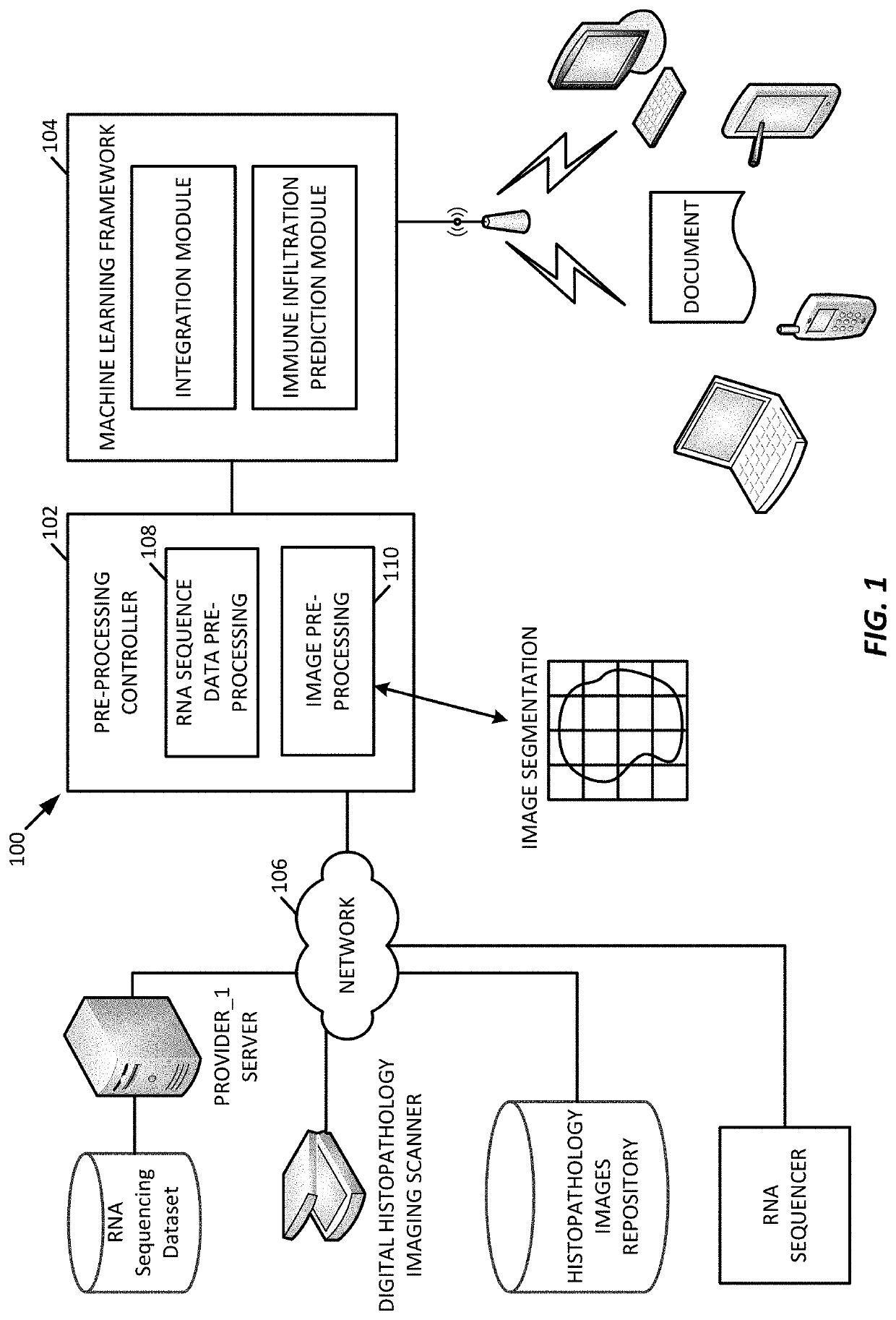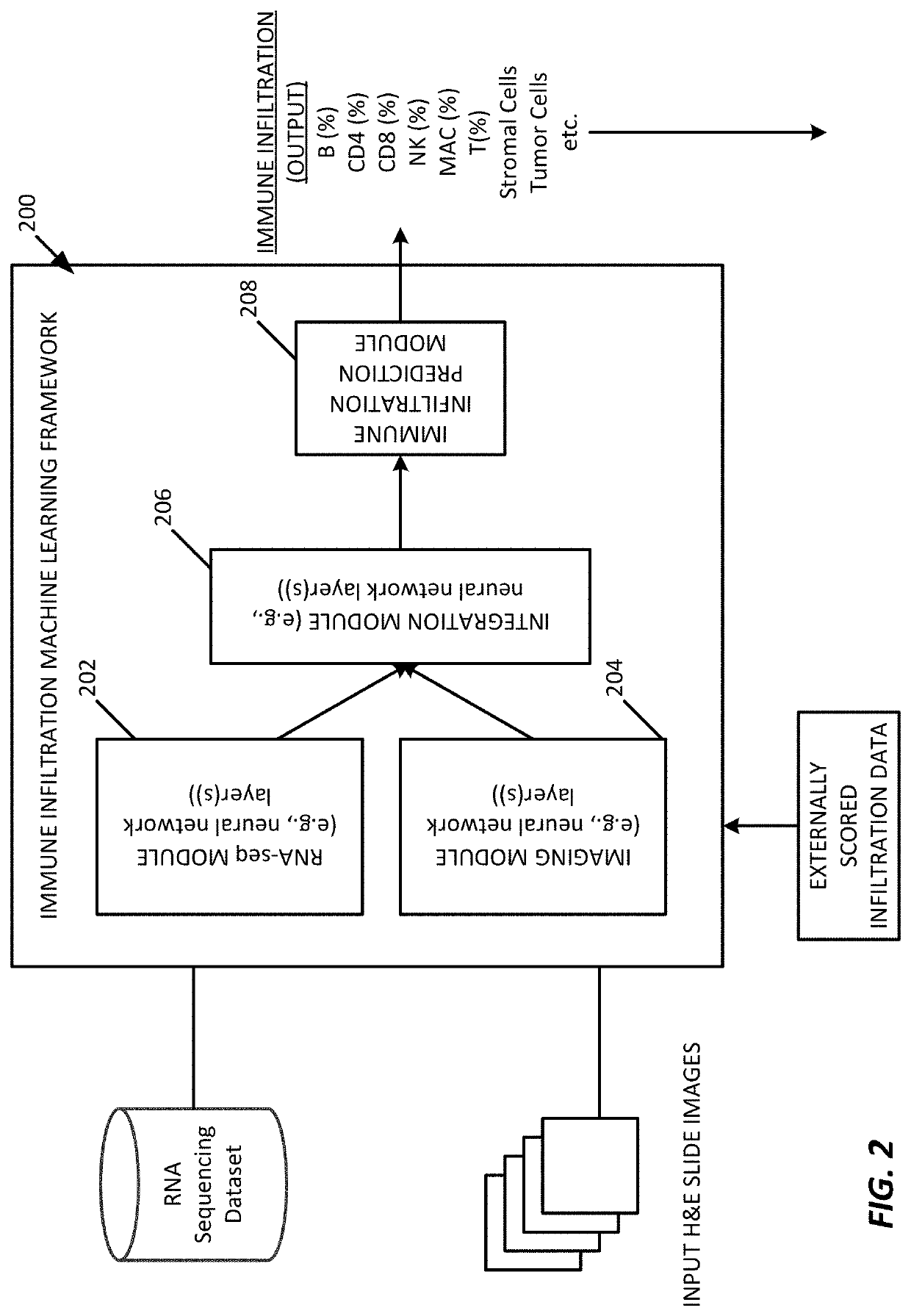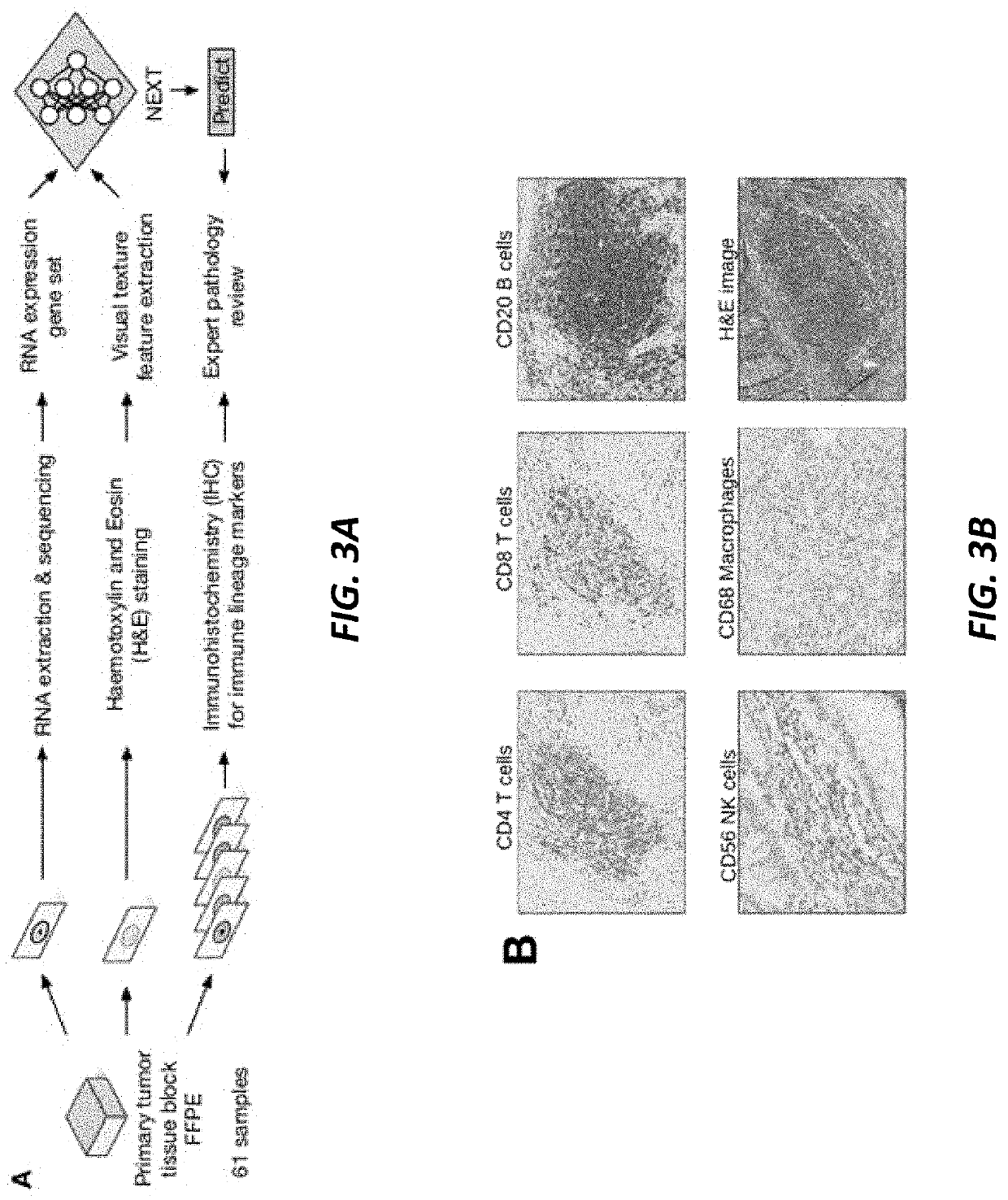Multi-modal approach to predicting immune infiltration based on integrated RNA expression and imaging features
a multi-modal approach and imaging feature technology, applied in image enhancement, instruments, recognition of medical/anatomical patterns, etc., can solve problems such as significant ambiguity in approaches, inability to routinely assess, and inability to reliably identify correct immune proportions
- Summary
- Abstract
- Description
- Claims
- Application Information
AI Technical Summary
Benefits of technology
Problems solved by technology
Method used
Image
Examples
example
[0061]In an example implementation of the immune infiltration predictor processing system 100 of FIG. 1 machine learning framework 200 of FIG. 2, we examined numerous solid tumor blocks in a pipeline that combined RNA sequencing features, visual texture features, and immunochemistry contextual data, to predict immune infiltration.
[0062]In an experiment, 61 formalin-fixed paraffin-embedded (FFPE) solid tumor blocks (specifically colorectal (n=14), breast (n=15), lung (n=17) and pancreatic (n=15)) were cut into alternating sections for RNA sequencing data, hematoxylin and eosin (H&E) staining data, and immunohistochemistry (IHC) staining data as shown in FIG. 3A. For the RNA sequencing data pipeline, the RNA module obtained normalized read counts from the RNA-seq data for a specific panel of genes. For the image data pipeline, the imaging features module generated visual texture features from H&E stained slides. Feature data from both pipelines were combined and analysed by the machin...
PUM
| Property | Measurement | Unit |
|---|---|---|
| Composition | aaaaa | aaaaa |
| Fraction | aaaaa | aaaaa |
| Gene expression profile | aaaaa | aaaaa |
Abstract
Description
Claims
Application Information
 Login to View More
Login to View More - R&D
- Intellectual Property
- Life Sciences
- Materials
- Tech Scout
- Unparalleled Data Quality
- Higher Quality Content
- 60% Fewer Hallucinations
Browse by: Latest US Patents, China's latest patents, Technical Efficacy Thesaurus, Application Domain, Technology Topic, Popular Technical Reports.
© 2025 PatSnap. All rights reserved.Legal|Privacy policy|Modern Slavery Act Transparency Statement|Sitemap|About US| Contact US: help@patsnap.com



